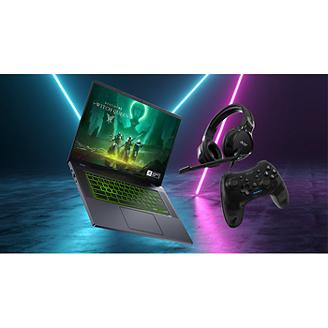Introduction
My gaming PC, Predator Orion 3000 PO3-655, had several issues right out of the box: a noisy cooling system and high idle temperatures. I decided to replace the case with a more spacious and well-ventilated option. With the extra space, I also planned to upgrade the CPU cooler.
Preparation
First, I took two photos: one of my motherboard and another of a standard ATX motherboard with the same LGA 1700 chipset. By overlaying the images with different levels of transparency, I aligned the sockets to the same size and checked the mounting hole positions. They were almost identical. Given potential scaling differences and camera angles, I considered the slight mismatch a minor margin of error.
After confirming compatibility, I started choosing a case. It was crucial that there was enough room for my motherboard beyond the standard ATX boundary, avoiding interference from protrusions or fans. Since my CPU ran hot even at idle, I opted for a case with three 140mm front intake fans to ensure good airflow.
I chose the Phanteks XT Pro Ultra, which offered a reasonable price and came with four 140mm fans included.
For the CPU, I ordered the Noctua NH-D15 G2 cooler.
Additionally, I prepared for the transition from RGB to ARGB with:
- DeepCool SC790 2-in-1 PWM & RGB
- DeepCool RGB Converter 5V ADD-RGB to 12V RGB Transfer Hub
Replacement Process
- Disconnected power and carefully dismantled the old case, labeling all connected wires.

- On the first day, I removed the GPU, cooling system, and front and top panels. I also examined the amount of thermal paste from the manufacturer and the weak heatsink that was installed.

- The next day, I received the new case and immediately tested the motherboard fitment in terms of mounting holes and dimensions. Everything was fine!


- Confident in the move, I prepared the new mounting system for the CPU cooler. The stock mounting was plastic, and I didn’t trust it to hold a heavy cooler.

- Installed the prepared motherboard into the new case, placed the 750W power supply, mounted the Noctua NH-D15 G2, slightly raising one fan to provide more clearance for the RAM, and connected the GPU. I was slightly worried about the front panel F_PANEL connector, which was a single block, but everything worked fine during the test boot.

- The only remaining task was cable management and dealing with the lighting, which took another day. I used DeepCool GH-01 to support the GPU, which also helped neatly hide the power cables for the graphics card.


Issues and Solutions
- When removing the top panel, I discovered that the WiFi antennas were glued to the case. I either had to detach them or buy separate ones in advance.


- The CPU cooler’s backplate was plastic and strongly adhered to the motherboard. I decided to disassemble the CPU retention mechanism—both to safely remove the adhesive without damaging the motherboard and to check if I needed the included 1mm LGA1700 spacers. It turned out the board already had its own spacers.
- The motherboard’s RGB system is a nightmare for those who want to use aRGB. I tried different setups, but my lighting still doesn’t work correctly. The colors flicker slightly, and I might need a dedicated controller. For now, I just turned off the lighting.
- Fan control is also not ideal, seemingly optimized for small 92mm fans. I manually set the intake and exhaust fans to minimum speed.
- The GPU with blower-style cooling is still loud, but that was expected. No way around that.
Results
After replacing the case, CPU and GPU temperatures dropped significantly, and overall noise levels decreased. Airflow improved, which positively impacted system stability. The new cooler keeps the CPU cool even under load.


Conclusions and Recommendations
- Replacing the case is not pointless—better airflow can prolong component lifespan.
- If you want customizable lighting, choose components with 4-pin 12V RGB, not 5V 3-pin aRGB or d-RGB, or wait for my experiments with a dedicated controller.
- If you want to keep the original case, you can install a CPU cooler up to 135mm, or possibly even 145mm. If my case swap hadn’t worked, I would have used the Thermalright Peerless Assassin 120 MINI BLACK (135mm tall with a 120mm fan). Also, note that under the top panel, over half the ventilation holes are covered with film.
- In the new case, you lose all front-panel ports—the motherboard’s onboard ports remain inside the case. For example, the Type-C port is now inaccessible. I plan to solve this by routing a hub externally.
I hope this material and my experiment will be useful and at least informative for you. I’d appreciate any feedback!








